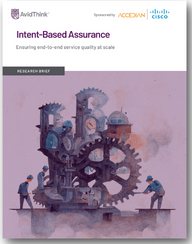Time flies, and April is already here — along with more than our fair share of showers in California!
For those who miss MWC, be sure to visit our NextGenInfra.io site for our MWC 2023 showcase (collaboration with Converge Network Digest). Also, don’t miss our popular Telco Cloud and Edge resource site and report!
Last month, the tech world faced turmoil with Silicon Valley Bank’s collapse and ChatGPT’s rapid adoption (100M users in 2 months), along with other AI applications raising IP concerns. Stuck between AI’s revolutionary potential (Bill Gates agrees) and financial market uncertainties, industry leaders are trying to stay optimistic. Despite AI’s existing use in telco (with hyperscaler partnerships), CEOs and boards are eager to explore more use cases, especially around generative AI. This mixed sentiment was evident at DT’s Silicon Valley mixer on Sand Hill Road last week, where DT’s board and execs mingled with promising startups and VCs.
New Middle Mile 2023
Stay tuned for our upcoming New Middle Mile resource site and report, exploring the evolving industry dynamics. Our mailing list subscribers will be notified when it’s available, and the site will soon feature thought leaders from prominent companies like Arelion, Orange, Colt, PCCW, AT&T, Aarna Networks, and Arrcus.
Recent Webinars
Missed our recent webinars and panels? Catch up on:
- Intent-based Assurance with Accedian and Cisco
- Cloud Infrastructure with Silverlinings (AWS, Uber, Ciena, etc.)
- Private Wireless Networks with NMG (Comcast, IBM, Samsung, etc.)
- Edge Field Day series on YouTube (Scale Computing, Avassa, Mako Networks, OpenGear)
- FWA trends on Fierce Wireless 5G Blitz Week (US Cellular, CommScope)
We have a packed event schedule, so join us at MPLS 2023 (Paris Apr 18-20), RSA Conference (San Francisco Apr 24-27), FutureNetWorld (London May 3-4), Big 5G (Austin May 15-17), and more, including…
ONUG Spring 2023
For ONUG Spring 2023, Jim Carroll and I will be capturing executive viewpoints on video. If you’re a sponsor, sign up for a complimentary slot or purchase a premium package. We also have limited free tickets available, so contact us at [email protected] to claim yours (please attend if you request one).
Reach out to us at [email protected] for collaboration opportunities on upcoming topics like SD-WAN/SASE, private mobile networks, disaggregated/cloud-native networks, and infrastructure security.
Now, let’s dive into the news!
5G
Dish is still suffering from February cybersecurity incident
Over a month after Dish’s cybersecurity attack, the company continues to face challenges. Customers report difficulties reaching customer care and uncertainty about their personal data’s security. Dish’s stock value has dropped over 71% in the past year, hitting a 15-year low. UBS downgraded Dish’s shares from “Buy” to “Neutral” due to the attack and concerns about delayed 5G sales to enterprise customers. Additionally, there are doubts about Dish’s ability to gain millions of smartphone users with its new Boost Infinite postpaid service, which has experienced a slower-than-expected rollout. Meanwhile, competition from existing wireless operators and cable companies like Comcast’s Xfinity Mobile and Charter’s Spectrum Mobile is intensifying.
Dish is using Ciena’s Blue Planet for its 5G OSS
Dish’s greenfield 5G network utilizes Ciena’s Blue Planet operational support systems (OSS). Blue Planet software handles subscriber onboarding via service order management and organizes and manages Dish’s infrastructure inventory. With Dish’s fully virtualized 5G network operating in the cloud, inventory management differs from traditional brownfield networks where most OSS functions require manual steps. Blue Planet manages physical inventory, such as switches, routers, and radio hardware, as well as virtual elements like cloud-based network functions, many hosted on Amazon Web Services.
Orange launches 5G SA in Spain
France-based Orange launched 5G standalone (SA) in Spain using Ericsson equipment. Orange will use Ericsson SA gear in Belgium, Luxembourg, and Poland, and Nokia gear for France and Slovakia. Orange has already deployed non-standalone (NSA) 5G in its seven European countries. Orange’s 5G SA launch surpasses Telefonica, Spain’s main operator, which has not deployed 5G SA yet. According to Ericsson, several operators struggle to monetize 5G, making the business case for SA deployment challenging.
Ericsson exec predicts network slicing will be a reality this year
An Ericsson executive anticipates network slicing to become a reality in 2023. Network slicing enables operators to provide different virtual slices of the network to customers, adapting it on the fly. Ericsson’s Mats Karlsson reports that the company is participating in 50 network slicing proof-of-concept trials, with many operators considering implementation. He expects leading operators to commercially deploy network slicing in 2023.
Cloud
Paradise Mobile will use AWS for its 5G network
Paradise Mobile plans to use Amazon Web Services (AWS) for its upcoming 5G network in Bermuda and develop cutting-edge applications for other operators. Paradise intends to run its 5G network using management software from Mavenir within an AWS-based Kubernetes stack.
Multi-cloud gets endorsement from big-three cloud providers
Amazon Web Services (AWS), Microsoft Azure, and Google Cloud have quietly endorsed multi-cloud services. AWS, which initially resisted multi-cloud, now offers numerous multi-cloud products, such as AWS Systems Manager and AWS Config. Microsoft Azure embraced multi-cloud earlier with Azure Arc in 2019, while Google Cloud entered the multi-cloud space with Anthos that same year.
Juniper sees growing focus on automation in the cloud
Juniper Networks’ recent deal with German operator Tele Columbus for its Cloud Metro routers and software exemplifies operators’ focus on automation. Tele Columbus aims to use Juniper’s Cloud Metro products alongside NEC’s xHaul products to create a converged interconnect network. Juniper believes the future of automation lies in the cloud, as it simplifies and accelerates network automation.
BT and AWS will collaborate on edge computing and IoT
BT Group is partnering with Amazon Web Services (AWS) on IoT, cloud networking, and edge computing. BT projects a $500 million revenue opportunity over the next five years, planning to sell IoT connectivity and services to UK enterprise customers. As part of the agreement, BT will become an AWS channel partner, reselling and managing AWS cloud and analytics applications along with its core connectivity services. This collaboration follows BT’s earlier announcement of working with AWS on edge computing to bring enterprise applications running on its LTE and 5G network closer to customers.
Open RAN
Samsung says operators should be deliberate about Open RAN deployments
Samsung advises operators to be deliberate about Open RAN deployments Alok Shah, VP of Strategy, Business Development, and Marketing at Samsung Electronics America, advises operators to be deliberate in their Open RAN deployments. He emphasizes that each operator has its unique Open RAN strategy and pace. Some operators, like Verizon, plan to transition to virtualized RAN (vRAN) before moving to Open RAN, while others, like Dish, are adopting both simultaneously. Shah suggests operators initially embrace Open RAN specifications and source equipment from a single vendor. Later, as they progress, they can mix and match equipment from different vendors, enabled by open interfaces.
AI is a top application for open RAN
One significant advantage of implementing Open RAN or virtualized RAN (vRAN) is that the same platforms can support AI inference and other applications at the network’s far edge. These edge platforms can host virtualized applications closer to users, providing lower latency. A Heavy Reading survey found that 62% of respondents listed AI as a top application they plan to support in their Open RAN/far edge solution, while 54% named cell site router (CSR) and content/media delivery and hosting among the top three applications.
VCs remain cool on Open RAN
Venture capital arms of major telcos, such as Orange Ventures, Verizon Ventures, and Deutsche Telekom Capital Partners, have been cautious about investing in Open RAN technology. One of the few winners, Cohere Technologies, has secured funding from Bell Canada and raised $81.5 million in financing, but it is more of a beamforming company than an Open RAN firm. Overall, the VC community remains skeptical about Open RAN.
Dell plans to enter vRAN market
Dell Technologies is preparing to enter the virtual RAN (vRAN) market. The company aims to combine sales of its existing servers with new vRAN management software in development. Details are unclear, but Dell is thought to be creating vRAN software to control 5G radios inside its servers, potentially allowing it to act as a network integrator. However, Dell is unlikely to manufacture physical 5G radios and will likely partner with existing 5G radio manufacturers like Ericsson, Samsung, and Nokia.
Mavenir is making progress with Deutsche Telekom, Qualcomm and Dish
Mavenir has updated its collaborations with Deutsche Telekom, Qualcomm, and Dish. Deutsche Telekom is using Mavenir’s OpenBeam massive MIMO radios for its Open RAN deployment in an undisclosed European country, with Mavenir acting as the end-to-end system integrator. Mavenir also launched the next generation of its OpenBeam massive MIMO 32TRX active antenna unit, featuring Qualcomm’s QRU100 5G RAN platform. Mavenir is supplying Dish Wireless with open vRAN software to support over 40,000 radios across Dish’s 5G cloud-native Open RAN network.
Private Networks
Nokia says it has 560 private network clients
Nokia now has over 560 private network clients, holding a 52% market share. Stephane Daeuble, Head of Enterprise Solutions Marketing, expects growth with an estimated 14 million potential industrial sites needing private wireless. About 23% of Nokia’s clients are in North America, mostly due to Citizens Broadband Radio Services (CBRS) spectrum.
Ericsson installs private wireless network for Purdue University
Ericsson installed a private wireless network at Purdue University Airport, aimed at enhancing security and efficiency. The network, part of Purdue’s Lab to Life testbed, utilizes 4G, 5G, CBRS General Authorized Access (GAA) spectrum, and a fiber network for backhaul. Saab installed Aerobahn and SAFE systems for operational efficiency.
NextLight uses private wireless to connect low-income students
NextLight deployed a private LTE network, providing free broadband for low-income students in Longmont, Colorado. The network, covering 50%-60% of 4,000 eligible students, utilizes 38 cell sites, CBRS GAA spectrum, and Baicells equipment. NextLight seeks funding to expand coverage.
Dell’Oro says private wireless is a bit over-hyped
Dell’Oro Group VP Stefan Pongratz believes private wireless networks are over-hyped, with revenues still small. Nokia, Huawei, and Ericsson are the top three private wireless small cell vendors globally. According to Dell’Oro Group data, the total private wireless small cell market outside of China exceeds $100 million but private wireless small cells is still less than 1% of the overall public-plus-private RAN market in 2022.
Verizon, NTT are narrowing private 5G focus
Verizon and NTT target automotive, industrial, and transportation logistics sectors for private 5G growth. NTT is focusing on these sectors for its private wireless business, while Verizon sees opportunities in logistics and ports.
MOCN may bridge the gap between public and private wireless networks
Multiple Operator Core Network (MOCN) technology aims to bridge the gap between private and public networks, but the business model may hinder its potential. Federated Wireless CEO Iyad Tarazi confirmed the company’s involvement in MOCN tests but declined to provide details.
Edge
Omdia predicts enterprise edge services will be a $245B market by 2027
Omdia predicts the global market for enterprise edge services will reach $116 billion in 2023 and $245 billion by 2027. Edge computing is expected to become mainstream and serve diverse workloads across verticals. Edge is a key enabler for fast-growing emerging technologies such as AI/ML and future concepts such as the metaverse that rely on immersive AR/VR-based experience.
SD-WAN
Graphiant scores $62M in Series B funding
Graphiant secured $62 million in Series B funding, raising its total funding to $96 million. The company aims to deliver MPLS performance and security without hardware. Lead investors are Sequoia Capital, Two Bear Capital, Atlantic Bridge and Harpoon Ventures. The company separates the WAN control plane from the data plane and the data plane resides in the company’s stateless core which acts as a hub through which all traffic is directed. That stateless core uses proprietary protocols to route traffic based upon customer and application metadata.
Zayo makes it into VSG’s U.S. carrier managed SD-WAN leaderboard
Zayo ranked eighth in Vertical Systems Group’s (VSG) latest U.S. carrier managed SD-WAN leaderboard, following its QOS Networks acquisition in January 2022. Fiber remains its primary business.
Aryaka delivers SD-WAN and SASE networks to smaller businesses
Aryaka Networks targets small and medium-sized businesses with affordable, easy-to-deploy SASE solutions, providing managed service capabilities and lifecycle services management.
Comcast expands SD-WAN options
Comcast Business expands its SD-WAN portfolio for small and medium businesses and single-location clients. The new products build on Comcast’s 2021 acquisition of Masergy, offering 24×7 security operations, intelligent application prioritization, and traffic steering.
Wrapping Up
And we’re done with March. See you back here in early May — or in Paris at Upperside Conferences MPLS 2023 if you’re going, or at RSA in San Francisco! Or London? Austin? Dallas?
The AvidThink team




